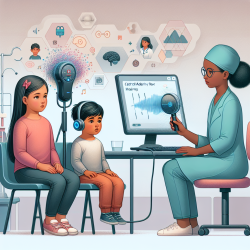The use of telehealth technology for speech and language services in remote and underserved areas is an exciting development in the field of speech-language pathology. The research article titled "Speech and Language Services Using Telehealth Technology In Remote and Underserviced Areas" by ShawnaLee Margaret Jessiman provides valuable insights into the efficacy and challenges of this approach.
This blog post will explore the key findings from the research and offer practical suggestions for practitioners looking to implement telehealth services effectively.
Key Findings
- Telehealth technology can be a promising method for providing speech and language services in remote areas.
- Both telehealth and in-person assessments were used to compare sound quality and overall efficacy.
- Technological and logistical problems were encountered, requiring modifications in equipment, room setup, and service delivery.
- Despite challenges, the effectiveness of telehealth technology appears promising when appropriate modifications are made.
Practical Suggestions for Practitioners
Based on the research findings, here are some practical suggestions for practitioners looking to implement telehealth services:
1. Ensure High-Quality Equipment
Using high-quality microphones, cameras, and monitors is essential. Consider using head-mounted microphones to reduce external noise and improve sound quality. Lapel microphones and vests can also be beneficial, especially for children who may fidget with wires.
2. Optimize Room Setup
The room where telehealth sessions are conducted should be acoustically and visually treated. Use heavy curtains to absorb sound and medium blue colors for visual contrast. Ensure the room is quiet and free from disruptions.
3. Train Facilitators
Having trained facilitators at both sites is crucial. Facilitators should be knowledgeable in using the equipment, troubleshooting issues, and understanding basic speech and language techniques.
4. Select Suitable Clients
Clients who have highly motivated families or access to an aide are excellent candidates for telehealth services. Ensure that clients can focus and attend to tasks during sessions.
5. Adjust Service Delivery
Start with direct treatment from the SLP and gradually involve parents or assistants more actively. Shorter sessions (20-40 minutes) are suitable for younger children, while older clients may benefit from longer sessions (30-60 minutes).
Encouraging Further Research
While the preliminary findings are promising, continued investigation into the cost-effectiveness and reliability of telehealth is recommended. Practitioners are encouraged to conduct further research and share their experiences to contribute to the growing body of knowledge in this area.
To read the original research paper, please follow this link: Speech and Language Services Using Telehealth Technology In Remote and Underserviced Areas.










